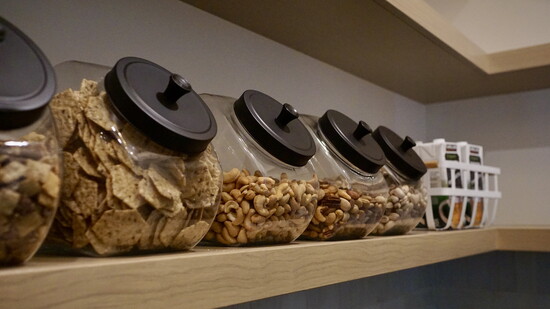Before founding Abbsolutely Organized, Abby Kahn was shaping lives and spaces as a kindergarten and second-grade teacher in Phoenix.
“Setting up my classroom was always the highlight of my year,” she says. “I loved making each corner purposeful, warm, and welcoming.”
That passion didn’t fade after the final bell… it evolved. As a new mom, Abby began designing activity-based play areas and creating systems that made her home easier to live in, not just prettier. Friends took notice, and started asking for help.
Soon, what began as a side hobby became a full-time calling. With a name that nods to both her knack for systems and her own name, Abbsolutely Organized was born.
“Organization has always come naturally, but now it’s also my purpose.”
Abby’s approach to organizing is rooted in real life, not Pinterest.
“A beautiful pantry that doesn’t work is just a styled photo.”
Her systems solve real-life pain points around how a family shops, eats, and lives. She reads each home as a combination of space and behavior: overflowing bins signal misalignment, buried duplicates point to visibility breakdowns, and ignored labels reveal an intuitive flaw.
“You’re often invited into clutter and chaos and your job is to listen without judgment and design a solution.”
With back to school season in full force, Abby is dishing her best kept secrets when it comes to pantry organization. And her first rule of thumb: start with zones.
“Zones should reflect how you use your pantry. We design them around your habits, not trends.”
Why Zones Work:
- They make everything intuitive; you know exactly where to look for snacks, pasta, etc.
- They reduce decision fatigue. Grouping by function eliminates clutter and chaos.
- They support the whole family; everyone knows where things go.
Where Zones Go Wrong:
- People think they need to follow Pinterest-perfect labels (you don’t).
- They over-categorize, which makes systems harder to maintain.
- Zones aren’t personalized (your zones should match your lifestyle and eating habits, not someone else’s).
Another tactic: creating and encouraging independence for kids.
- Set up clear, kid-only zones with bins at eye level.
- Limit what’s accessible and control overflow.
- Include them in midweek refills to build ownership.
Abby calls decanting- transferring pantry staples into clear containers- one of the most misunderstood organizing tools. When done right, it reduces clutter, improves visibility, and streamlines access to everyday items. But it’s not always necessary; for busy households or rarely used foods, it can add more maintenance than it’s worth.
“Decant only when it simplifies your life."
For families or anyone who shops in bulk, excess is part of the rhythm. Abby always creates a Backstock Zone, a designated space for extra groceries that don’t need to be mixed into everyday items.
“Backstock isn’t extra… it’s essential.”
Her ultimate goal? To give clients a lasting foundation- one that holds up through real life. And to get there, Abby follows a few tried-and-true must-dos.
- Build zones that reset themselves with minimal effort
- Add a “flex bin” for unpacked groceries
- Set aside 5 minutes weekly for a simple reset: toss, return, refill
- Involve the entire household
- Offer refresh sessions seasonally or monthly
Abby emphasizes maintenance days; not as major overhauls, but quick, strategic resets. Done monthly or quarterly, two organizers tackle small but impactful tasks: tossing expired items, wiping bins, restocking, and realigning zones.
abbsolutelyorganized.com
The B2S Reset
As the school year ramps up, Abby and her team offer returning clients a thoughtful back-to-school reset- a seasonal refresh to ease the transition. From kid-friendly snack zones and grab-and-go breakfast shelves to dinner baskets and labeled bins, these practical, “good enough” systems help families navigate mornings and mealtimes with less stress and more flow.
